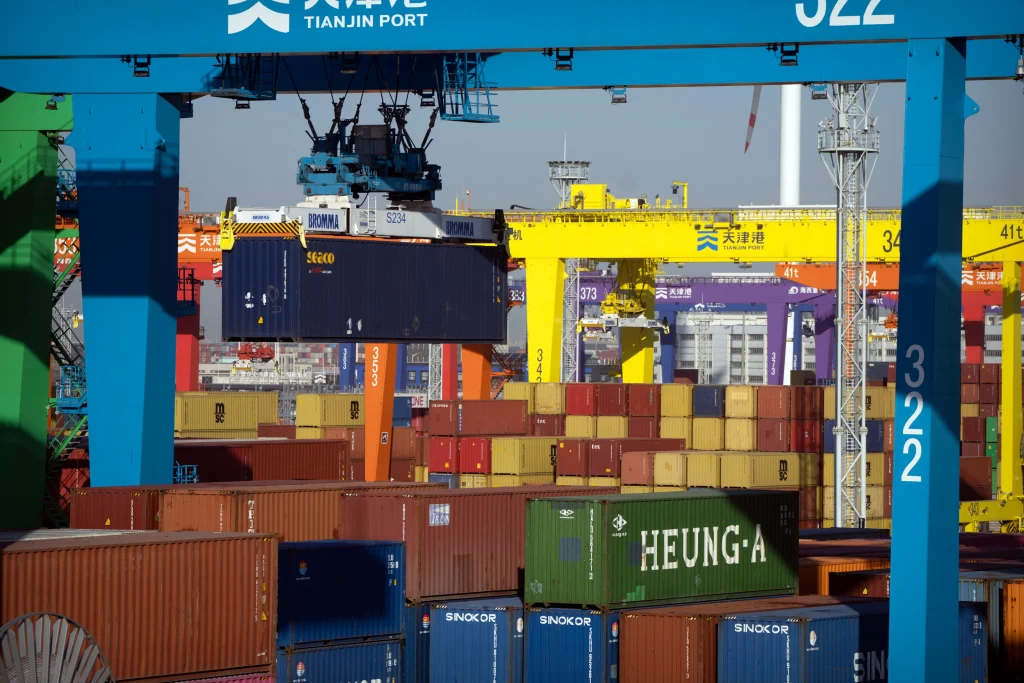
China’s overseas shipments are set to struggle further, analysts said, after exports grew at a slower pace in April despite a coronavirus-induced low base last year, with the slowdown of imports further accelerating, adding to the uncertainties over the post-Covid economic recovery.
Exports beat expectations and rose by 8.5 per cent last month from a year earlier to US$295.42 billion, down from a surprising 14.8 per cent increase in March, according to data released by China Customs on Tuesday.
Imports, meanwhile, fell short of expectations and shrank by 7.9 per cent in April from a year earlier to US$205.21 billion, down further from a fall of 1.4 per cent in March, amid weak demand and lower commodity prices.
It seems increasingly clear that the global economic slowdown is weighing on China’s exportsIris Pang
“It seems increasingly clear that the global economic slowdown is weighing on China’s exports,” said Iris Pang, chief economist for Greater China at ING.
“Falling imports – an input for future exports – suggest that a further deterioration of exports in the coming months is highly likely.
“It is looking more likely that, in response, the government will step in to support the manufacturing sector’s labour market through fiscal stimulus.”
The weak trade data is consistent with April’s official manufacturing purchasing managers’ index, which fell to 49.2 having remained above the 50-point mark separating expansion and contraction for the first three months of the year.
The further fall in imports may be partly driven by the slowdown in global demand, which affects China’s purchases of parts and components for the so-called processing trade, said Zhang Zhiwei, chief economist at Pinpoint Asset Management.
The government may wait and see if the recovery in the service sector is strong enough to bring the unemployment rate to the pre-Covid levelZhang Zhiwei
“The top priority for the government is to reduce the unemployment rate, in our view,” he added after the jobless rate among those aged 16-24 climbed to 19.6 per cent in March, while the overall unemployment rate dipped slightly to 5.3 per cent.
“The government may wait and see if the recovery in the service sector is strong enough to bring the unemployment rate to the pre-Covid level.”
On a monthly basis, exports fell by 6.4 per cent and imports fell by 9.7 per cent in April.
Economists from Goldman Sachs said the sequential decline in exports is in line with historical patterns for this year’s earlier-than-normal Lunar New Year, as pent-up orders during the holiday were released in March.
April’s export volumes also reversed almost all of March’s increase after accounting for seasonality and changes in export prices, said economists from Capital Economics.
“This suggests that global demand for Chinese goods remains weak and supports our view that the jump in March had more to do with distortions to the customs data rather than a genuine turnaround,” they said.
Capital Economics also said “exports will decline further before bottoming out later this year” given the gloomy outlook for external demand, while the rebound in domestic demand following China’s reopening will drive a recovery in imports over the coming months.
“It is possible that the reopening boost to domestic demand was smaller than expected, as many consumer-facing services are not import-intensive,” the economists from Capital Economics added.
“What’s more, there is still some scope for further gains in fuel demand as international travel in and out of China continues to recover.”
To support economic recovery, Beijing has pledged to stabilise trade with developed countries, while also exploring new possibilities with emerging economies.
Exports to the Association of Southeast Asian Nations, China’s largest trade partner, rose by 4.49 per cent in April, year on year, while imports declined by 6.25 per cent.
Exports to the European Union also continued to grow in April, increasing by 3.87 per cent, year on year, while imports from the bloc fell by 0.12 per cent.
Shipments to the US, though, fell by 6.5 per cent in April compared with the same period last year. US imports also fell by 3.1 per cent.
Elsewhere, exports to Russia rose by 153.09 per cent in April, while imports rose by 8.06 per cent.
